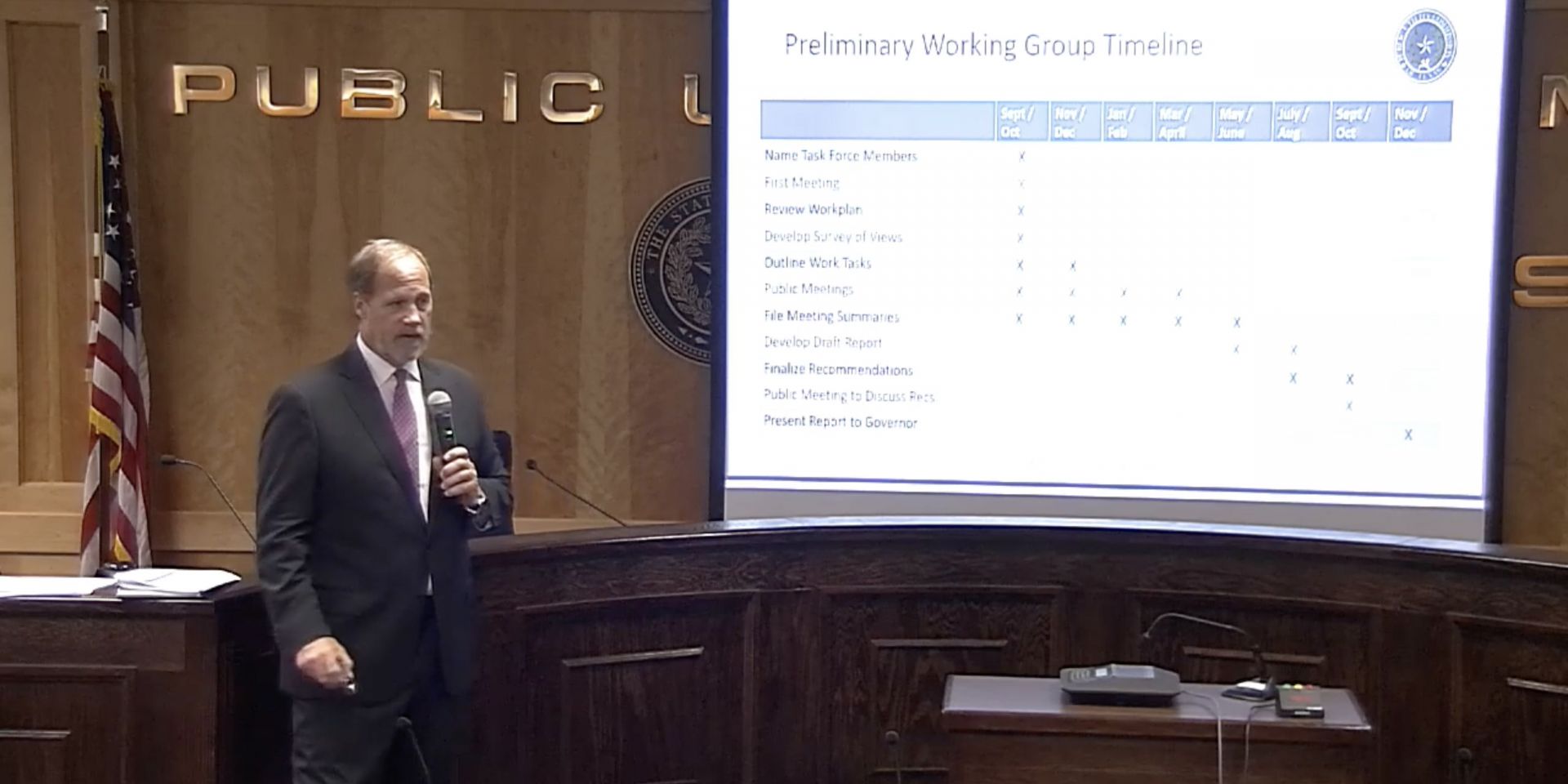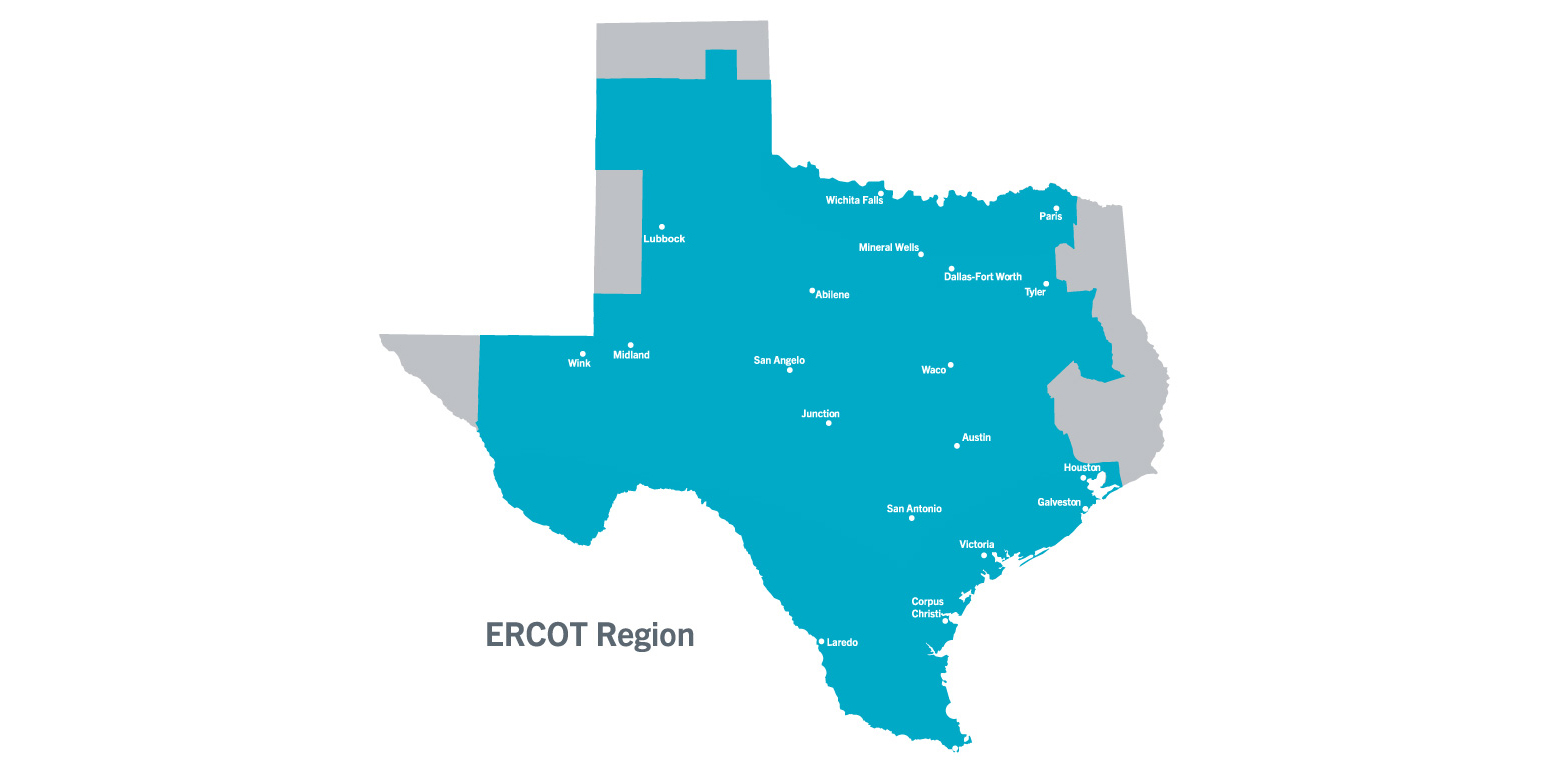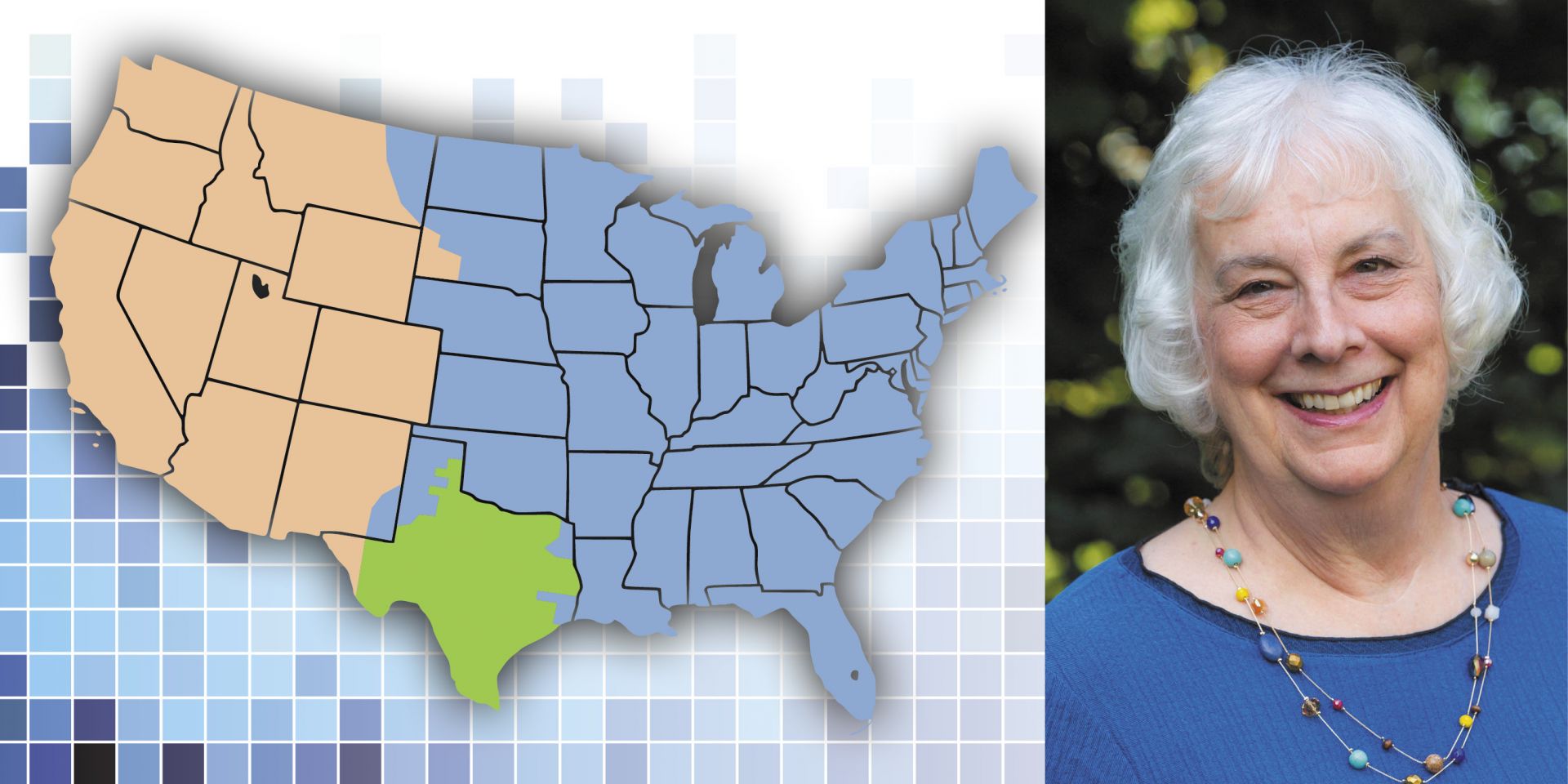PUCT commissioner Jimmy Glotfelty leads the discussion at the Texas Advanced Nuclear Reactor Working Group’s first public meeting, on September 28. (Image: PUCT)
The Texas Advanced Nuclear Reactor Working Group—formed recently by the Public Utility Commission of Texas (PUCT) at the direction of Gov. Greg Abbott—hosted its first public meeting last Thursday to discuss the group’s organizational structure and outline a plan to turn Texas into a national leader in the use of advanced nuclear energy.
Texas Gov. Greg Abbott (right) talks nuclear energy at UT-Austin on August 16. With Abbott are X-energy chief executive officer Clay Sell (left) and Dow chair and CEO Jim Fitterling. (Photo: Office of the Texas Governor)
Texas Gov. Greg Abbott sat down with X-energy chief executive officer Clay Sell and Dow chair and CEO Jim Fitterling last week for a “fireside chat” at the University of Texas–Austin on the role of nuclear energy and technology in the state.
Map of ERCOT over the state of Texas (Image: ERCOT)
Motivated by February’s Texas grid debacle and last month’s Electric Reliability Council of Texas (ERCOT) alert pleading with residents to conserve energy, Gov. Greg Abbott earlier this week issued a letter to members of the Public Utility Commission of Texas (PUC), directing them to take immediate action to improve electric reliability across the state. According to the governor’s office, the directives build on reforms passed in the 87th legislative session to increase power generation capacity and ensure the reliability of the Texas power grid.
Fig. 1. All reactors. The median DER net capacity factor of the 96 reactors included in this survey for the three-year period 2018–2020 is 91.33 percent. For the five three-year periods between 1997 and 2011 shown above, 104 reactors were in operation. The 2012–2014 capacity factor includes 100 reactors, and 2015–2017 includes 99 reactors.
Capacity factor is a measure of reliability, and reliability delivers results. The U.S. nuclear power fleet produced about 789.9 TWh of clean electricity in 2020 and ended the year with 94 operating reactors. According to Energy Information Administration data, that’s about 37 percent more electricity than the 576.9 TWh produced in 1990 by a much larger fleet of 112 reactors.
Nuclear News has tracked and analyzed the capacity factors of the U.S. fleet since the early 1980s, before concerted industry efforts yielded unforeseen performance improvements. High nuclear capacity factors are now less an achievement than an expectation. So much so, in fact, that advanced reactors in development today are assumed to be capable of achieving capacity factors above 90 or even 95 percent.
The U.S. fleet has maintained a median capacity factor near 90 percent for 20 years (see Fig. 1), and the median design electrical rating (DER) net capacity factor for 2018–2020, at 91.33, does not disappoint—unless by showing virtually no change relative to the median of 91.34 recorded in 2015–2017. However, this lack of meaningful difference only underscores the consistent reliability of the U.S. fleet.








 Maybe everything really is bigger in Texas, but that’s not necessarily a good thing. The brutal winter storm that hit much of the country earlier this week struck the Lone Star State with particular severity, leaving the power grid in shambles and millions of Texas residents without power, in many instances for days. On Tuesday, at the height of the power crisis, more than 4.4 million utility customers were without access to electricity, according to
Maybe everything really is bigger in Texas, but that’s not necessarily a good thing. The brutal winter storm that hit much of the country earlier this week struck the Lone Star State with particular severity, leaving the power grid in shambles and millions of Texas residents without power, in many instances for days. On Tuesday, at the height of the power crisis, more than 4.4 million utility customers were without access to electricity, according to